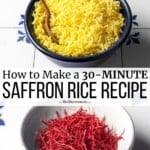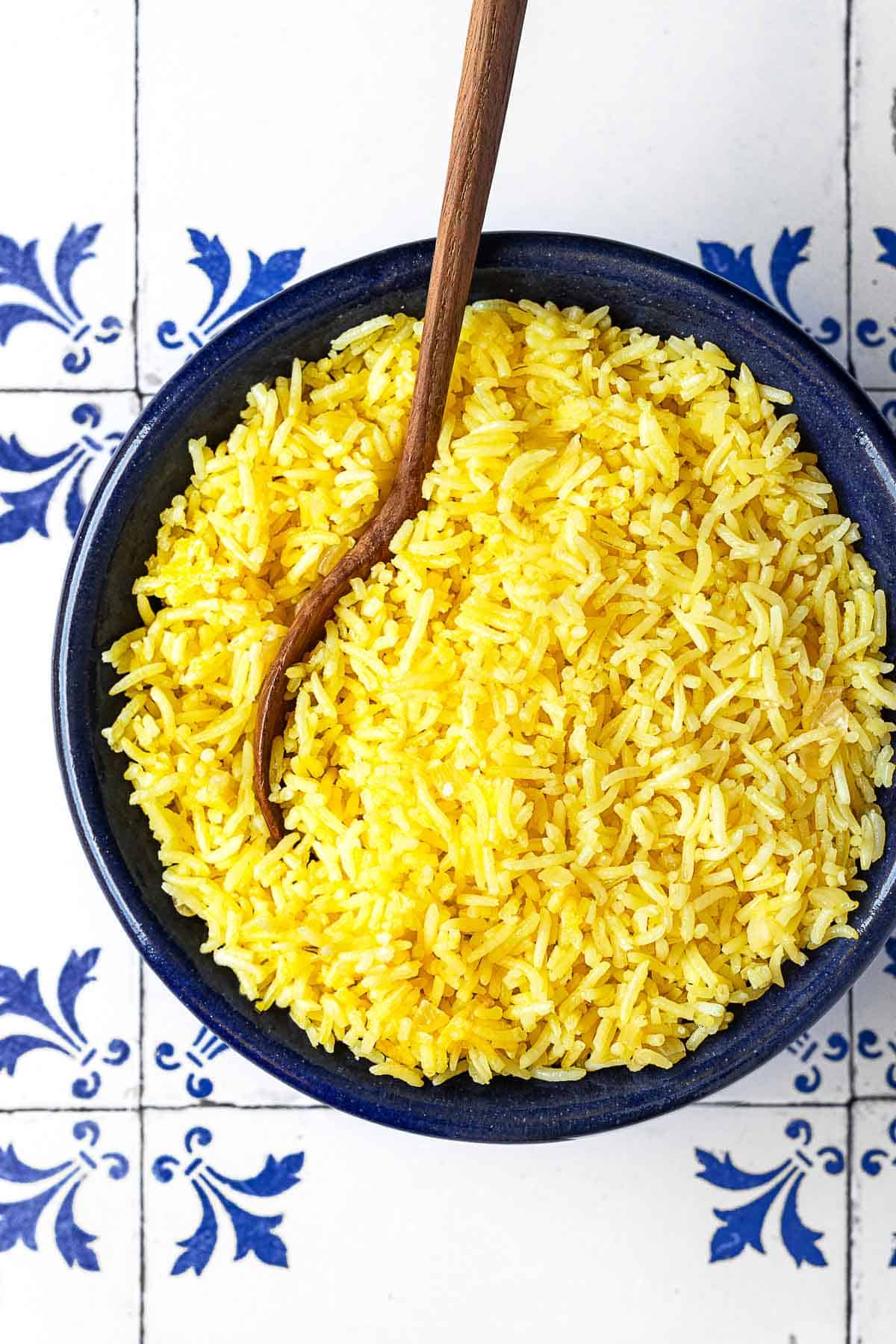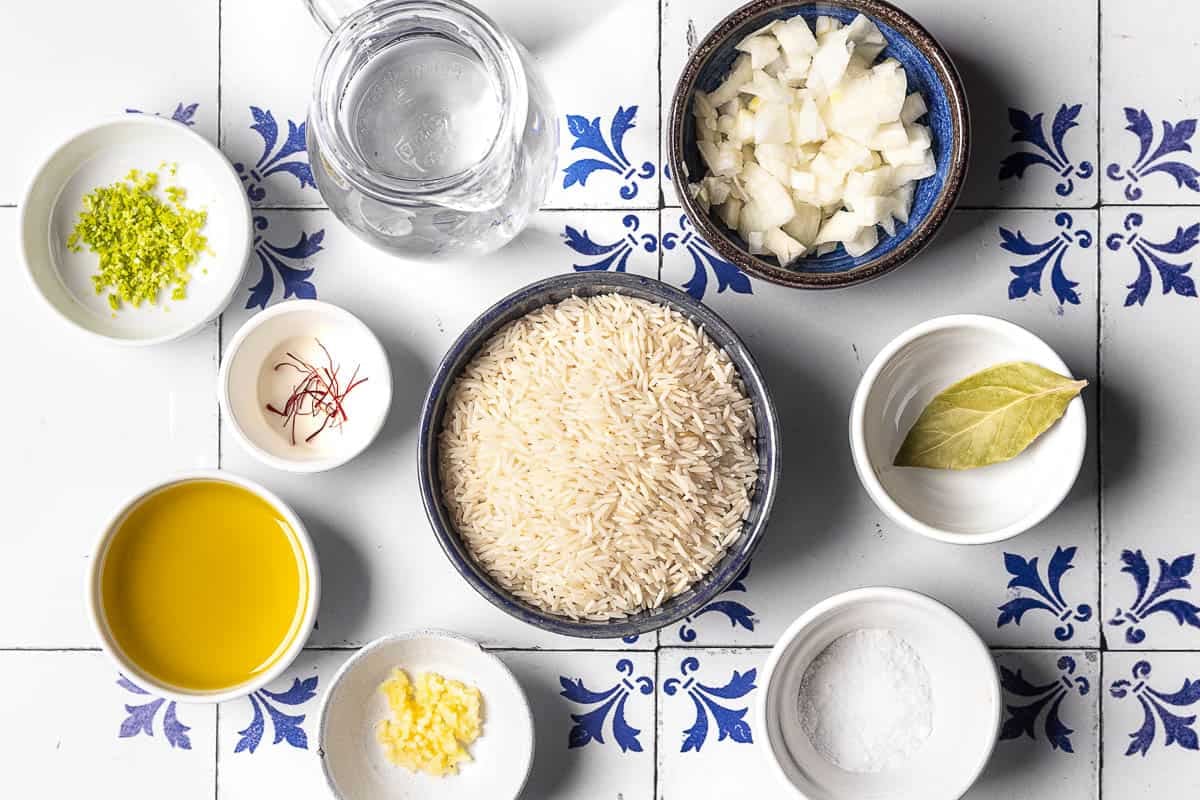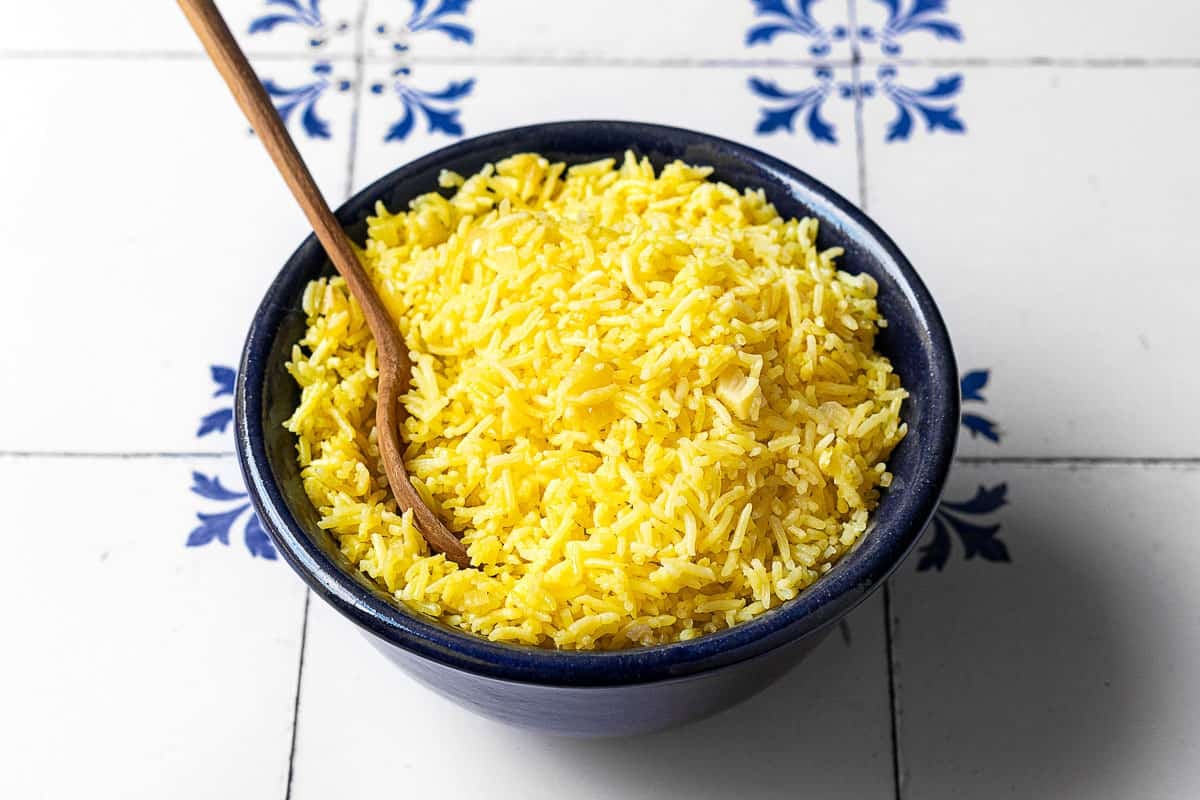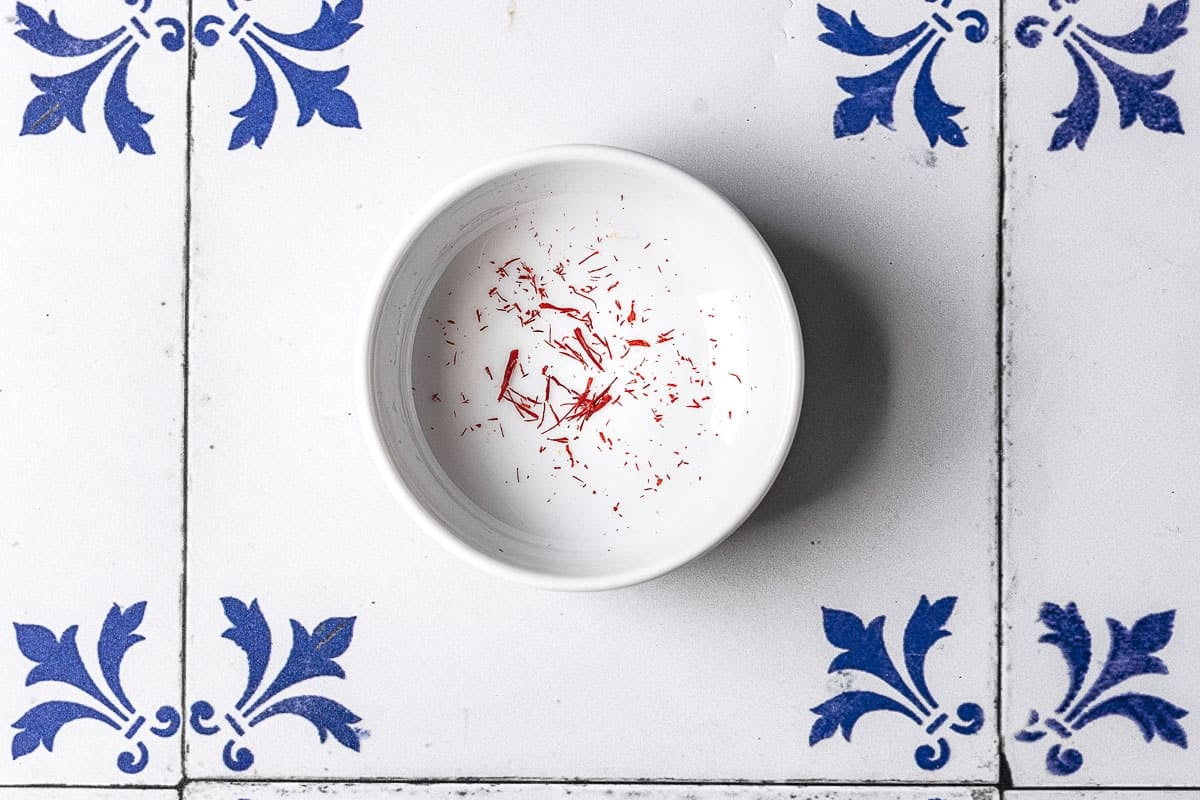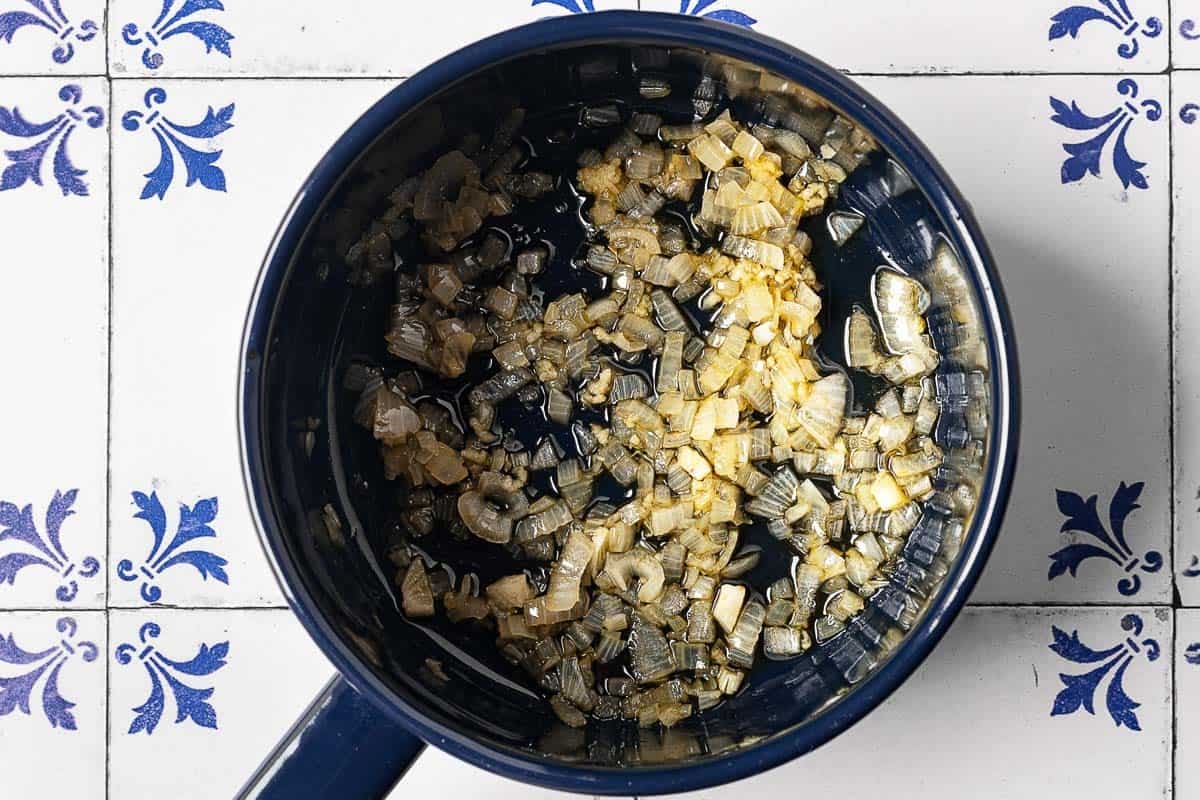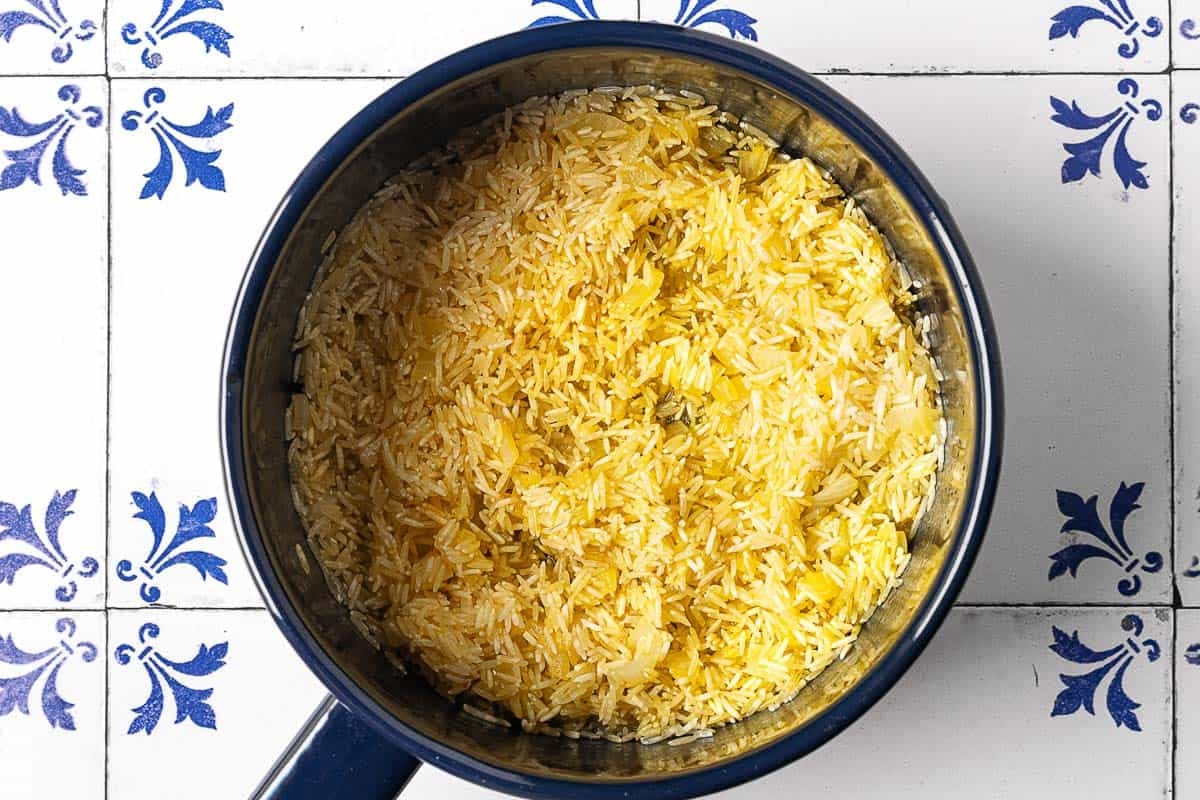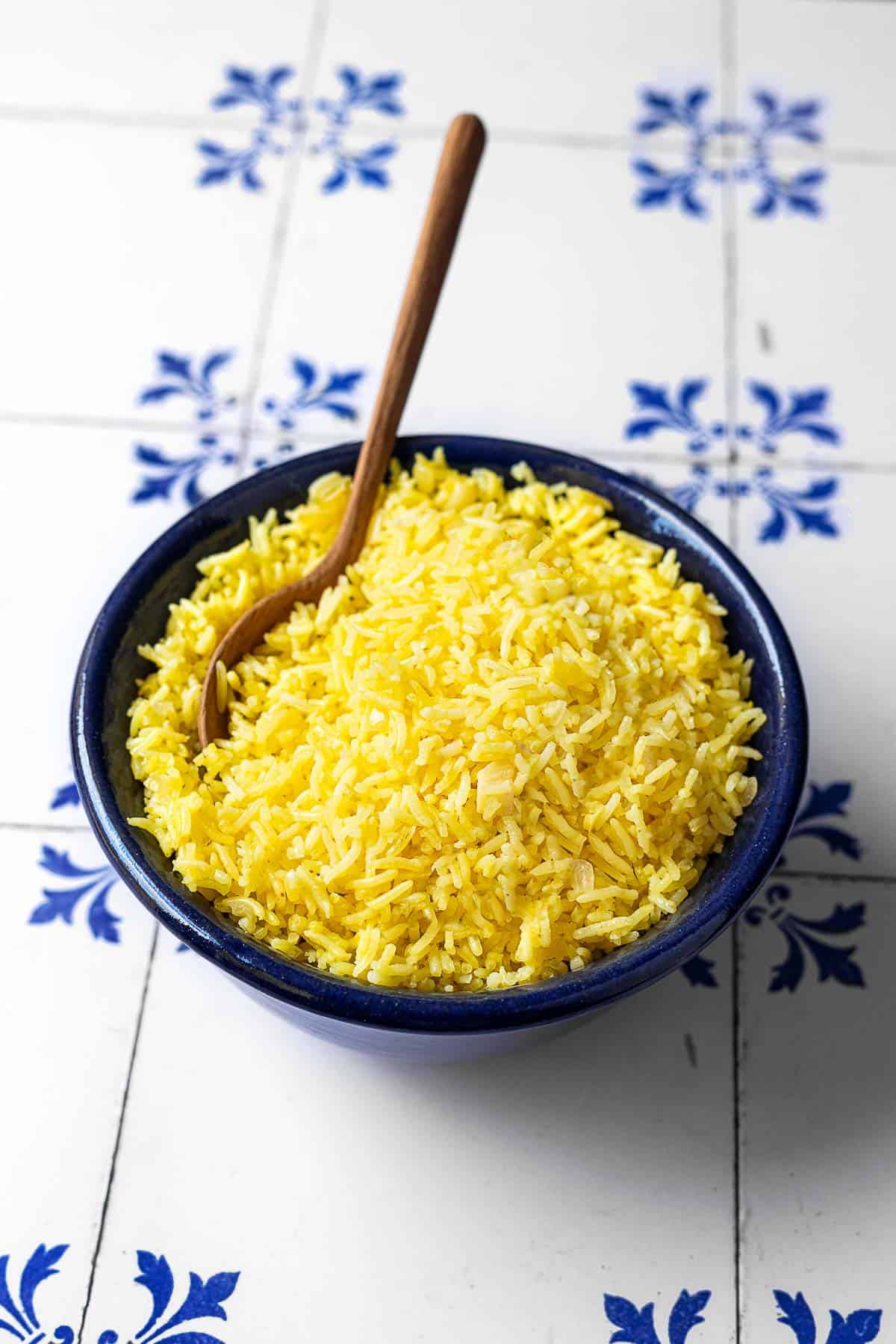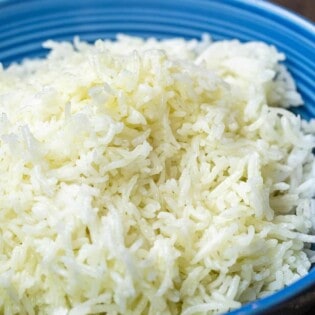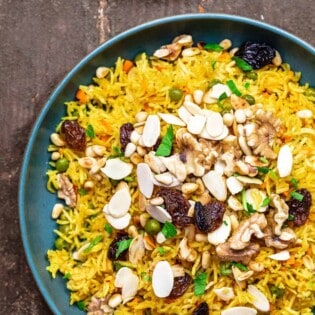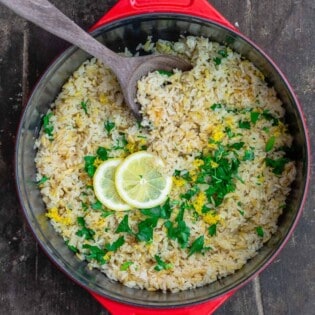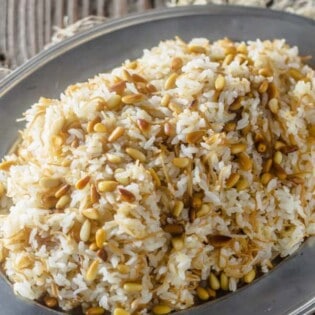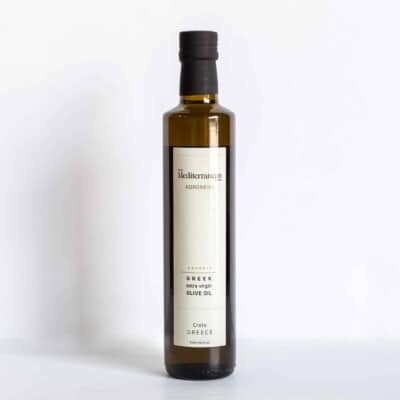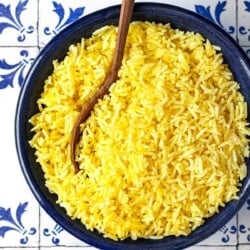Saffron rice is a vibrant, flavorful, and delicious staple of Persian cuisine. To make it, cook white rice in an aromatic vegetable broth or chicken stock, scented with saffron, giving the once plain rice a bright yellow color, along with subtle floral and earthy notes.I love to serve saffron rice with traditional Mediterranean and Middle Eastern dishes like Fesenjan, Kofta Kebabs, or Moroccan Lamb Stew, but don’t stop there! Almost anything that goes well with white rice also work with this golden hued rice. Make a batch to serve alongside Whole Roasted Chicken, Lamb Meatballs With Caramelized Onions, or a vegetarian main like Whole Roasted Cauliflower. The lovely yellow rice adds another layer of vibrancy to your dinner table, making it all the more inviting for those you choose to share it with.
What is Saffron Rice?
Originating in modern-day Iran, variations of saffron rice are found in many cuisines across the world. In South Asia, people often cook saffron rice with fragrant spices like cinnamon, caraway seeds and cardamom pods. In Thailand, saffron rice has turmeric, chili, and fish sauce added for flavor. For me, and much of my culture, we finish the majority of our Iranian rice dishes with a sprinkle of saffron as a garnish.This is a quick and easy recipe so you can make delicious saffron rice your next favorite side dish.
What is in Saffron Rice?
You only need five core ingredients for saffron rice: basmati rice, saffron, extra virgin olive oil, kosher salt, and vegetable broth, chicken stock or water. But, just to give this yellow rice a little something special, I added a few extras to boost the flavor profile. I think you’re gonna love it!
Basmati rice: Basmati rice is a long grain, aromatic rice perfect for creating fluffy rice dishes. (You can find more tips and tricks for basmati rice in our guide to no-fail basmati rice.) I use Tilda Pure Basmati rice, but any supermarket basmati rice available to you is fine to use. Saffron: This red spice derived from the crocus flower is often sold in dried strands or threads, which are the stigma and styles of the flower. It is an expensive spice so you want to make the most of it! A little goes a long way. See “Tips for making Saffron Rice” below on how to make your saffron go further. To read more about saffron check out our guide, What Is Saffron? And if you already know you love it, you can find this floral spice at our shop and have it delivered straight to your door. Extra virgin olive oil: High-quality extra virgin olive oil, like our Koroneiki Organic Greek EVOO is used to fry the onion, garlic and rice before the liquid is added. The olive oil seasons and separates the rice once it is cooked. Broth: You can use vegetable broth, chicken stock, or water as your cooking liquid. While water will work well if you don’t have broth on hand, I prefer broth as it gives a further layer of rich savoriness to the rice. Kosher salt: Salt is essential for flavoring the rice, especially if you’re using water or low-sodium vegetable broth. Yellow or white onion: Finely diced onion adds extra flavor to this saffron rice without distracting from the fluffy texture. Garlic: Garlic and onion are a perfect marriage of flavors—the garlicky notes add a further depth to the flavor profile of this yellow rice recipe. Lime zest: The citrus notes provided by the zest give a nice brightness to this dish and complement the saffron. Make sure to zest only the green part of the lime (not the white pith), as the pith can be bitter. If you don’t have lime, lemon can be used in its place. Bay leaf: Bay leaf adds a peppery profile without needing to add pepper, which would make the final dish less aesthetically pleasing.
Tips for Making Saffron Rice
This recipe is pretty easy to follow, but a few tips and tricks are always helpful. For fluffy, flavorful saffron rice follow the steps below.
How to grind and bloom saffron: To get the most out of saffron, add 1/2 teaspoon (or about 10 strands) of saffron to a spice grinder or mortar and pestle. Grind the strands into a fine powder. Stir 1/8 teaspoon of the ground saffron with 3 tablespoons of warm water. This process is called blooming. Do this to draw the color and complex flavor from the spice far more effectively than using the strands alone. Rinse the basmati rice: Wash the rice in cold water and strain. Do this a few times until the water runs clear. Rinsing removes starch from the surface of the rice resulting in fluffy and separate grains. Omitting this step would result in a sticky rice. If you don’t have a fine mesh strainer or sieve: You can easily rinse rice in a mixing bowl. Cover the rice with cold water, and use your hand to gently agitate the mixture. Then slowly dump out the water (gravity will do the work for you). Continue until the water runs clear. Use a non-stick pot with a lid: Nonstick prevents the saffron rice from sticking to the bottom, while the lid traps the steam once the cooking liquid has been absorbed. If you don’t have a nonstick pot, you can use a heavy-bottomed pot, just be sure it’s nice and hot and well oiled before cooking, add a full 1 1/2 cups of liquid, and check in the final few minutes to make sure it’s not sticking and burning at the bottom. Use the right amount of liquid: The ratio of basmati rice to cooking liquid (water or broth) is 1 cup rice to 1 1/2 cups liquid. Too little and your rice will be undercooked and crunchy. Too much liquid and the rice will be overcooked and mushy. Fry the rice before adding the liquid: Fry the rice in extra virgin olive oil and the onion and garlic before adding the cooking liquid. This brings about a nutty profile to the rice. Season: Season the rice well with kosher salt (especially if you are using water or low-sodium broth). Allow the rice to rest before serving: Once the cooking time is over, let the rice sit, undisturbed with the lid on, for 5 minutes before fluffing it with a fork to separate the grains. The steam will make your rice nicely fluffy.
How to Cook Saffron Rice
With a few simple steps, saffron rice comes together in under 30 minutes, making it the perfect weeknight side dish.
Bloom the saffron: If you’re using whole threads, grind about 10 threads until they’re a fine powder. Mix 1/8 teaspoon of the ground saffron with 3 tablespoons of water and set aside to bloom. Rinse the rice: Rinse your rice with cold water until the water runs clear. This will ensure it doesn’t clump together. Fry the onions and garlic: In your saucepan, heat 2 tablespoons of olive oil over medium-high heat. Add 1 finely diced onion and fry until it has softened and turned translucent. Then add 1 clove of crushed garlic and fry until the aroma is released, about 30 seconds. Toast the rice: Add the rice and toast in the garlic and onion oil until the rice is coated and starts to turn a pearly white. Pour the bloomed saffron and liquid into the rice mixture and mix until evenly coated. Add the broth, boil, and simmer: Add the cooking liquid (broth or water), bay leaf lime zest, and a healthy pinch of salt. Give the mixture a stir, then bring the water to a boil. Once boiling, turn the heat to low and cover the pot. Cook until the rice has absorbed the water, about 15 to 20 minutes. Finish and serve: Allow the rice to rest, covered for 5 minutes, then remove the bay leaf and fluff the rice with a fork before serving.
What to Serve with Saffron Rice
Saffron rice is a particularly amazing side dish because it’s full of complex flavor, but pairs well with just about anything savory. For a vegetarian meal, serve saffron rice alongside Easy Moroccan Vegetable Tagine or Whole Roasted Cauliflower. For a hearty dinner complete with meat, I love saffron rice with Fesenjan or Kofta Kebabs. Saffron is also incredible with fish, like Mediterranean Salmon Kabobs or Moroccan Fish.
How to Store and Reheat Leftover Rice
Saffron rice will keep for 5 days if stored in an airtight container in the refrigerator, or up to 1 month if frozen. To store cooked rice: The best way to reheat rice is to heat it, covered, in the microwave or stovetop. To reheat frozen rice, simply give yourself a little more time (There’s no need to defrost frozen rice before reheating). If your rice tastes crunchy, add a splash of water, stir, and continue reheating until it’s warm and soft.
More Rice Recipes We Love
Browse all Mediterranean recipes. Visit Our Shop.
No-Fail Basmati Rice (Stovetop & Rice Cooker)
Middle Eastern Rice Pilaf with Peas and Carrots
Greek Lemon Rice Recipe
Lebanese Rice with Vermicelli
This exquisite, medium intensity Greek EVOO boasts flavor notes of fresh apple, artichoke, and sweet almond. We love it with veggies, in rice dishes, salads and more. It’s perfect for everyday use!

